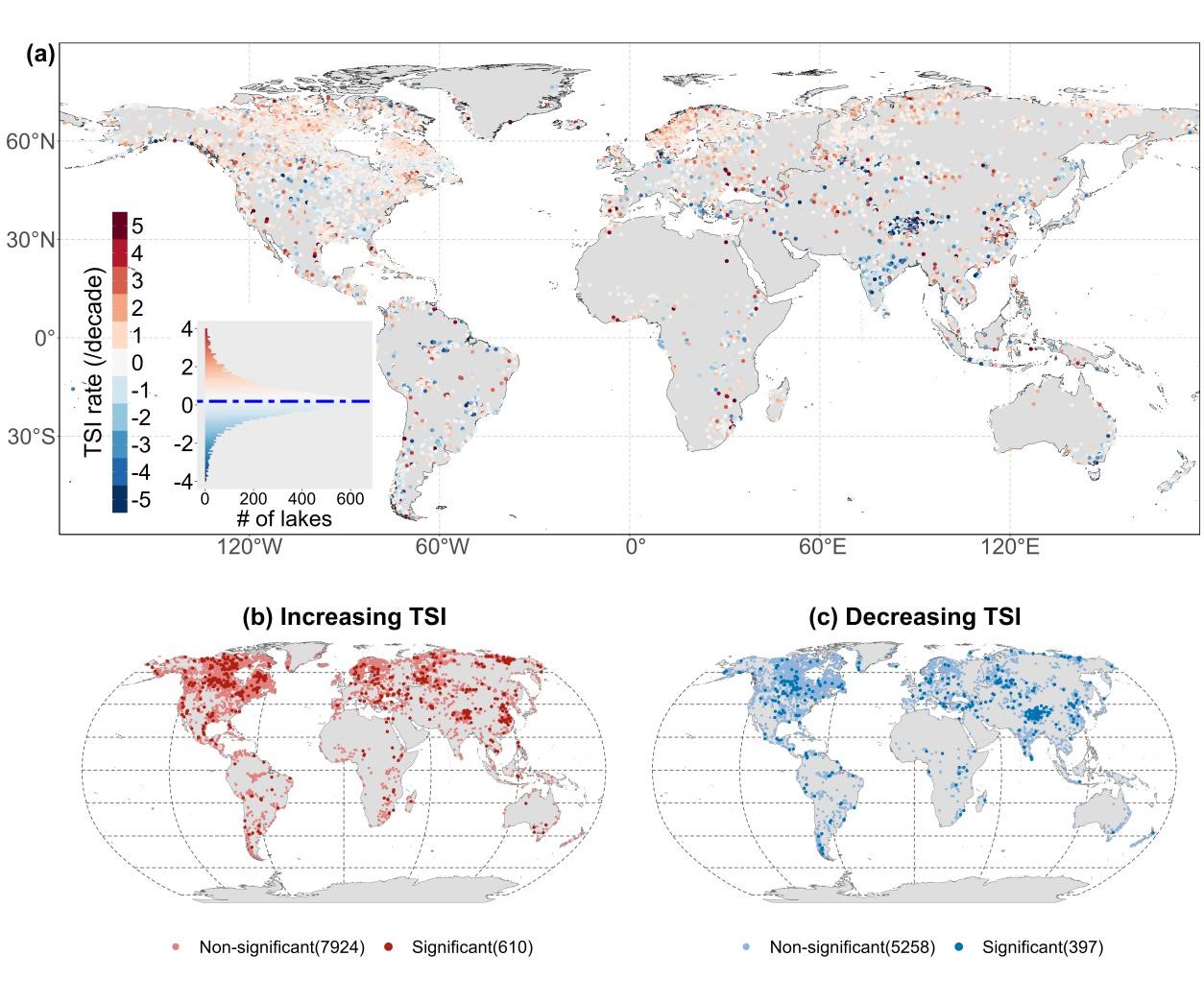Study Reveals Global Lake Eutrophication Trends
A new study led by Dr. ZHANG Yibo from the Nanjing Institute of Geography and Limnology, Chinese Academy of Sciences, provides the first global assessment of long-term changes in lake trophic state and their driving mechanisms. The findings were recently published in Global Change Biology.
Using 3,756 field measurements combined with remote sensing observations, the team developed a high-accuracy trophic state index (TSI) retrieval model by integrating semi-analytical algorithms with machine learning. Applying this model, they quantified TSI trends for 14,189 lakes larger than 10 km² worldwide from 2003 to 2023.
Results show a significant global trend of eutrophication, with TSI increasing by 0.19 per decade. Strong regional contrasts were observed: lakes in North America, Europe, Russia, and parts of Africa are rapidly eutrophying, while those in South America, Australia, and West Asia show signs of improvement.
The study identifies climate warming, stronger solar radiation, increased wind speeds, and intensified rainfall as key natural drivers, while urban expansion and fertilizer use are the main anthropogenic contributors. Conversely, watershed vegetation cover was found to mitigate nutrient loading and slow eutrophication.
This research fills a major knowledge gap on global lake water quality, offering new insights into the combined impacts of climate change and human activity, and providing a scientific basis for predicting future ecological trajectories and guiding water management strategies.

Fig. 1. Spatial distribution of global mean TSI and trophic state classifications for global lakes during 2003–2023

Fig. 2. Global trends in lake TSI during 2003–2023
Article Information:
Xie, G., Zhang, Y.*, Wang, Q., Shi, K., Zhang, Y., Zhou, Y., Qin, B., He, J., & Li, N. (2025). Multiple impacts of climate change and anthropogenic activities on lacustrine trophic state. Global Change Biology, 31(9), e70510.
Link to article: https://doi.org/10.1111/gcb.70510
